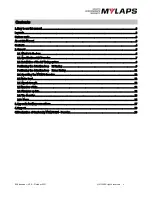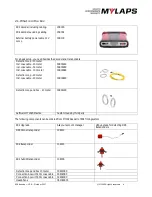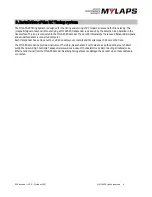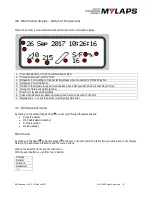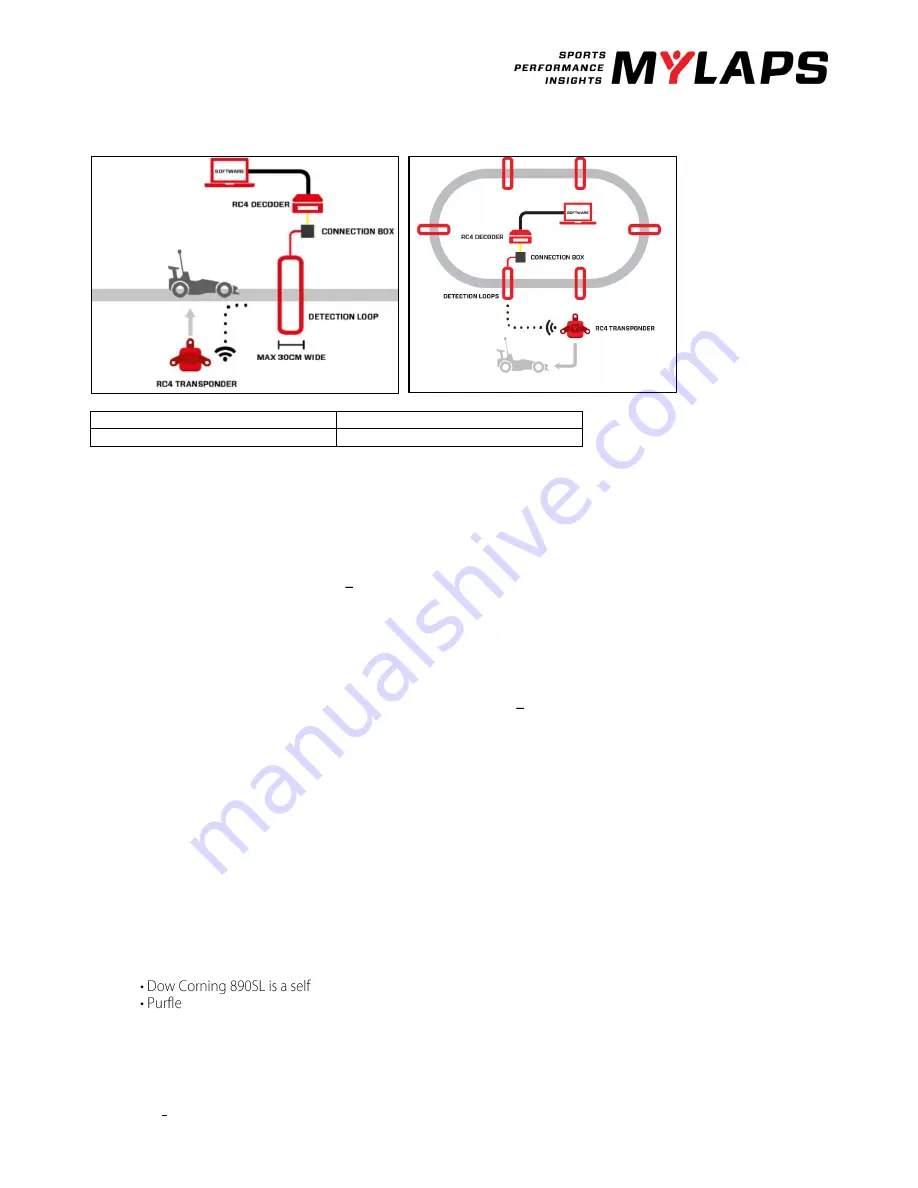
RC4 decoder V2.0. - October 2017
© MYLAPS rights reserved
9
3.1. Installation RC4 system - RC Racing
Sport
Loopwidth
RC
30 cm (1ft)
To install the MYLAPS RC Timing System, one needs to install a detection loop, connect the decoder and mount the MYLAPS
RC transponders to the cars/Drone
Installation of the detection loop
All wiring of the detection loop must be installed according to the drawings, to avoid a serious degradation in the
performance of the system.
Positioning the detection loop RC Racing
1.
The detection loop must be positioned in such a way that the transponder is above the centre of the detection loop
when the front of the car is above the finish line. Make sure vehicles cannot pass outside the detection loop. Extend
the detection loop outside the track if necessary.
2.
The detection loop can be used for a track width of a maximum 10m (33ft).
3.
Cut the slots in the track a maximum of 2cm (3/4inch) deep and 30cm (1ft) apart.
Installation of the detection loop wires and cabling For RC Racing
1.
Make sure the slots are clean and dry. This will ensure a perfect seal when the silicone is applied after installation of
the wiring. Put the wires of the detection loop in the slots and cut the excess length of the detection loop wires.
2.
When all wires are installed, put the heat shrinkage sleeve over a detection loop wire end. Then solder the loop wire
end to the short wire end of the connection box. When soldering the wires together, the solder should flow through
the entire connection and not only around it. Now put the shrinkage sleeve over the soldered connection and hold
it over a heat source to shrink the sleeve (also see 5 the drawing on the next page). Repeat this procedure for the
second wire end of the detection loop.
3.
Fill the slot with silicone. Make sure not to overfill the slots and that the silicone is fully under the surface of the track,
otherwise tires may pull out the silicone. If any silicone spills out of the slot, remove the excess silicone by scraping
the top with a small piece of cardboard. This also ensures that the silicone is pressed into the slot and into the sides
of the slot to ensure a perfect seal.
There are a wide variety of silicone types available in hardware stores; it is important that the right type is used.
Silicone that can withstand different temperatures as well as both wet and dry conditions since weather situations
can vary should be used. If you are unsure, check the specifications of the silicone. The following types of silicone
have been shown to yield lasting results and are recommended by MYLAPS:
-levelling silicone kit. It is applied as a liquid and fills the slot completely.
x is a polyurethane-based silicone that retains its elasticity under a wide range of temperatures.
4.
In the case of an OFF-ROAD track, cover the loop with carpet or something similar. The carpet can then be covered
with sand. Please be aware of the max. distance of 15cm (6inch) between the transponder and the detection loop.
5.
The detection loop is sensitive to interference, sometimes emitted by nearby cables. When possible, keep other
cables 5m (15ft) away. Also make sure cars on other parts of the track will not get closer than 5m (15ft) to the
detection loop, to avoid false inputs.




